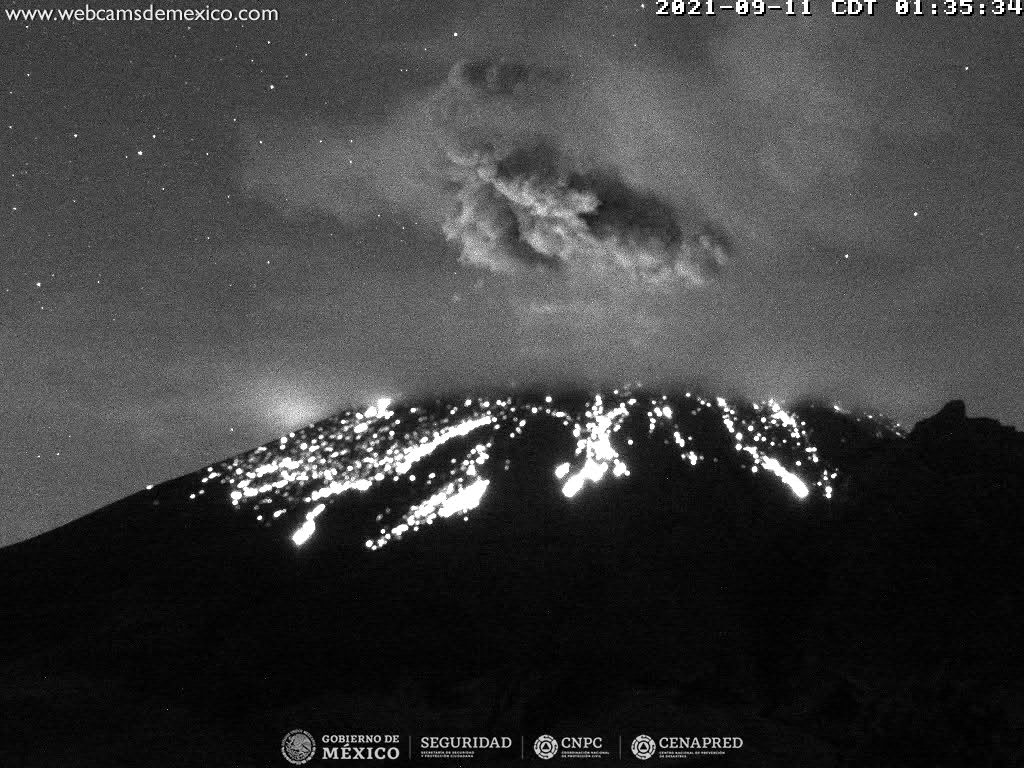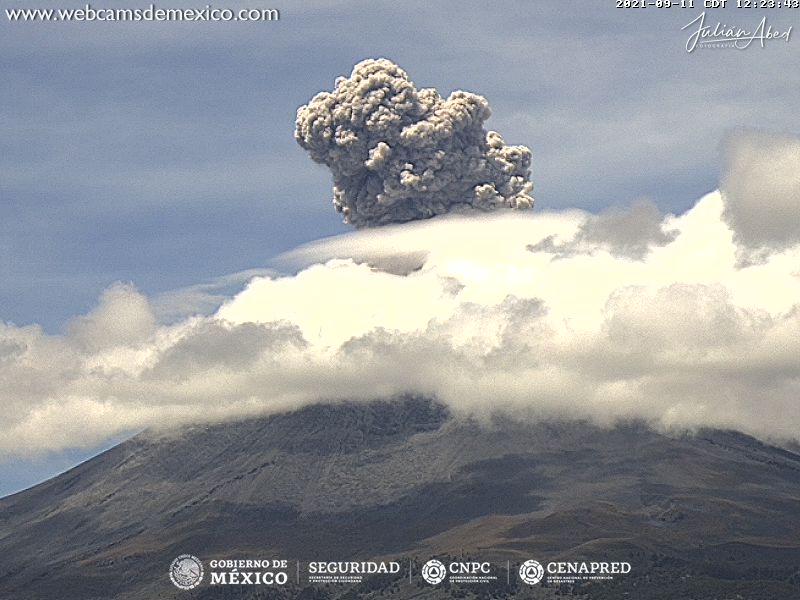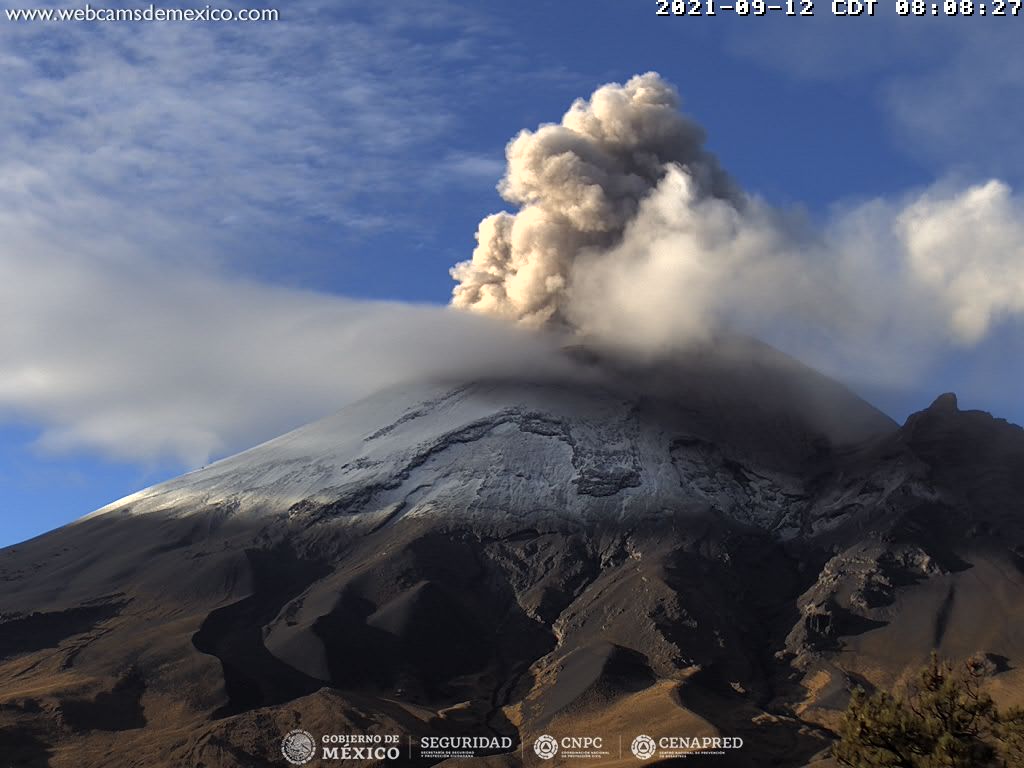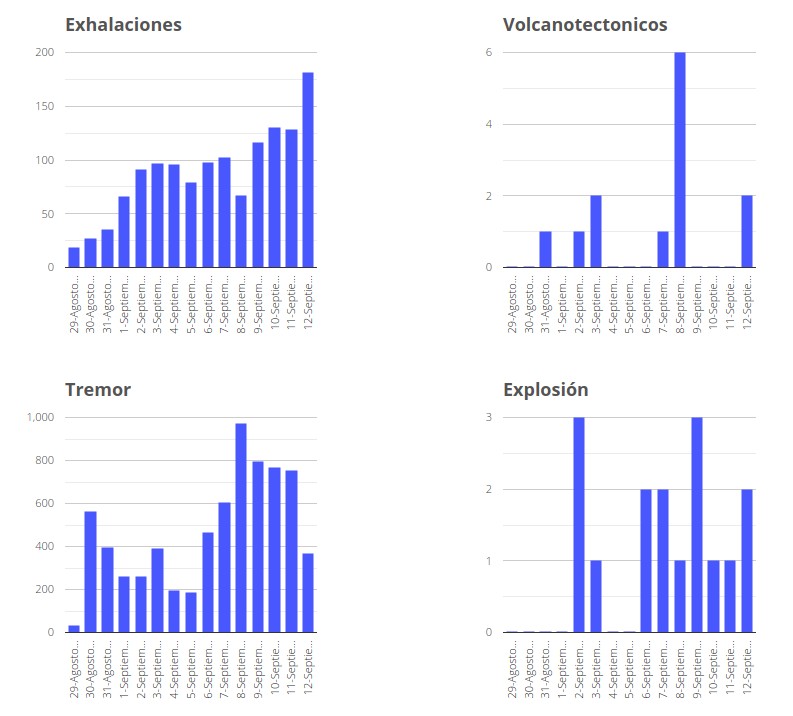Strong explosions at Popocatepetl volcano, Mexico

In 24 hours to 16:00 UTC on September 11, monitoring systems of the Popocatepetl volcano registered 128 exhalations accompanied by water vapor, volcanic gases and low ash content.1
Additionally, 753 minutes of low-amplitude tremor were recorded as well as an explosion at 06:34 UTC:




181 exhalations were registered in 24 hours to 16:00 UTC on September 12, as well as two explosions — at 17:22 and 18:23 UTC, 368 minutes of tremor, and two volcano-tectonic earthquakes — M1.8 02:00 and M2.0 at 13:46 UTC.2
The explosions ejected volcanic ash to a height of about 2 000 m (6 500 feet) above the crater — 7 400 m (24 300 feet) above sea level.
In addition, incandescent fragments were observed at a short distance from the crater.


The CENAPRED urges NOT TO APPROACH the volcano and especially the crater, due to the danger posed by falling ballistic fragments and, in the event of heavy rains, moving away from the bottom of ravines due to the danger of mud and debris flows.
The Alert Level remains at Yellow, Phase Two.


Geological summary
Volcán Popocatépetl, whose name is the Aztec word for smoking mountain, rises 70 km (44 miles) SE of Mexico City to form North America’s 2nd-highest volcano. The glacier-clad stratovolcano contains a steep-walled, 400 x 600 m (1 312 x 1 968 feet) wide crater.
The generally symmetrical volcano is modified by the sharp-peaked Ventorrillo on the NW, a remnant of an earlier volcano.
At least three previous major cones were destroyed by gravitational failure during the Pleistocene, producing massive debris-avalanche deposits covering broad areas to the south. The modern volcano was constructed south of the late-Pleistocene to Holocene El Fraile cone.
Three major plinian eruptions, the most recent of which took place about 800 CE, have occurred from Popocatépetl since the mid-Holocene, accompanied by pyroclastic flows and voluminous lahars that swept basins below the volcano. Frequent historical eruptions, first recorded in Aztec codices, have occurred since precolumbian time.3
References:
1 CENAPRED monitoring report of the Popocatepetl volcano September 11, 2021
2 CENAPRED monitoring report of the Popocatepetl volcano September 12, 2021
3 Popocatepetl – Geological summary – GVP
Featured image credit: CENAPRED

Commenting rules and guidelines
We value the thoughts and opinions of our readers and welcome healthy discussions on our website. In order to maintain a respectful and positive community, we ask that all commenters follow these rules.